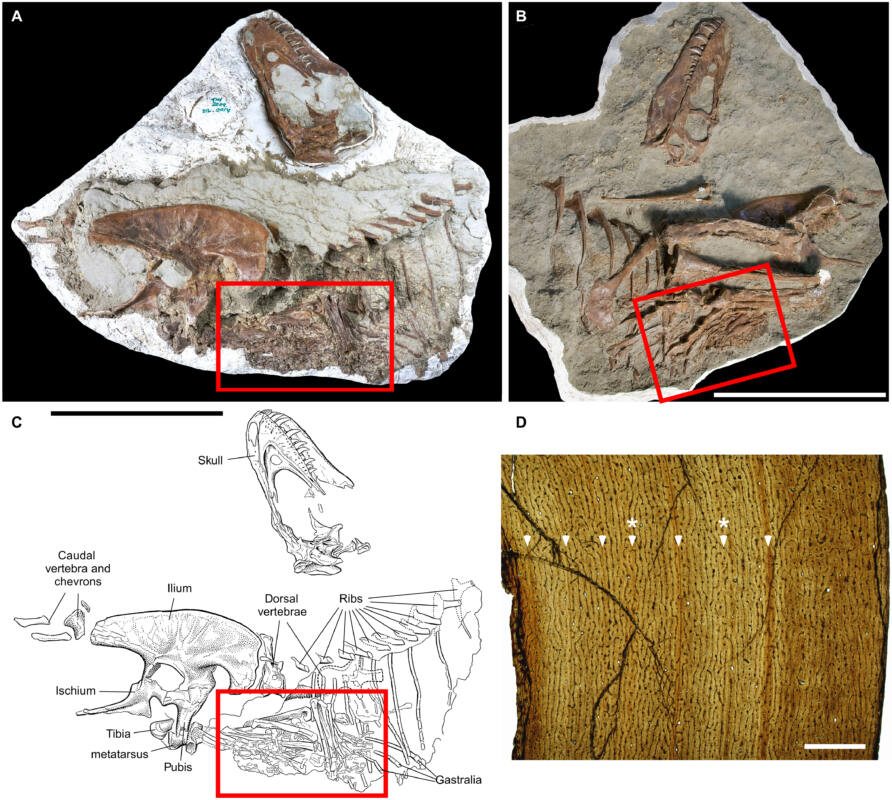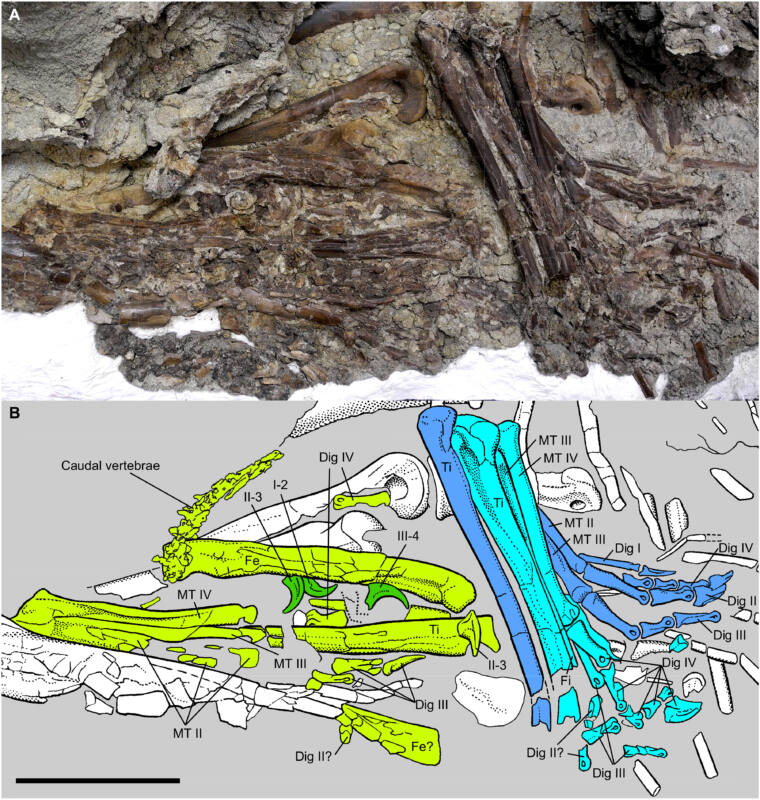The study of fossils offers scientists a look at species that lived long before documented history. Once in a while, scientists get a glimpse of something unexpected during their examinations. According to a recent report by Science Advances, a team of paleontologists discovered remnants of a young Gorgosaurus libratus‘ last meal in its stomach. The fossilized species is a member of the tyrannosaurus family.
The finding represents the first time scientists have seen stomach contents preserved in “proper anatomical condition” in the tyrannosaurus.
“[This is the] first direct evidence of feeding behavior or diet in a juvenile tyrannosaur,” wrote study co-author Darla K. Zelenitsky in an email to CBS News.

Reuters reported that the Gorgosaurus lived in what we now know as Alberta in Canada about 75 million years ago.
Because of its smaller size, the Gorgosaurus could move around easier and faster than adult members of its species and tyrannosaurs. This made it adept at chasing down its prey. Upon examining the fossilized remains of the young tyrannosaurus (estimated to be between 5 and 7 years old when it died), scientists found bones from two smaller dinosaurs called Citipes, a two-footed creature about the size of a large turkey.
MORE: New study suggests a massive dust cloud killed the dinosaurs
“From their respective builds, in other words, adult tyrannosaurs were much better equipped for going after very large prey, whereas young tyrannosaurs were able to chase down swift, small prey,” Zelenitsky told CBS News. “Also, whereas adults were more ‘indiscriminate’ feeders, eating carcasses of large plant-eating dinosaurs, often crunching through bones in the process, young individuals were far more picky or precise in how they fed.”
Based on the fossilized bones found in the Gorgosaurus, the scientific team concluded the reptile preferred to dismember its prey and swallow the limbs whole, which would digest in the stomach.

Each of the bones found in the stomach was at “different stages of digestion,” which led to the conclusion that they were consumed at different times shortly before the Gorgosaurus died.
By studying fossils such as this, paleontologists hope to uncover more of the mysteries of how these reptiles lived, evolved and died. Through those discoveries, scientists intend to help the world understand more about the planet’s evolution over the years.
MORE: Paleontologist and volunteers find rare dinosaur bone in fossil park
Tyrannosaurus fossil offers scientists a look at its last meals originally appeared on Simplemost.com, helping make the most out of life.
> > SIGN UP for the Simplemost weekly newsletter < <


